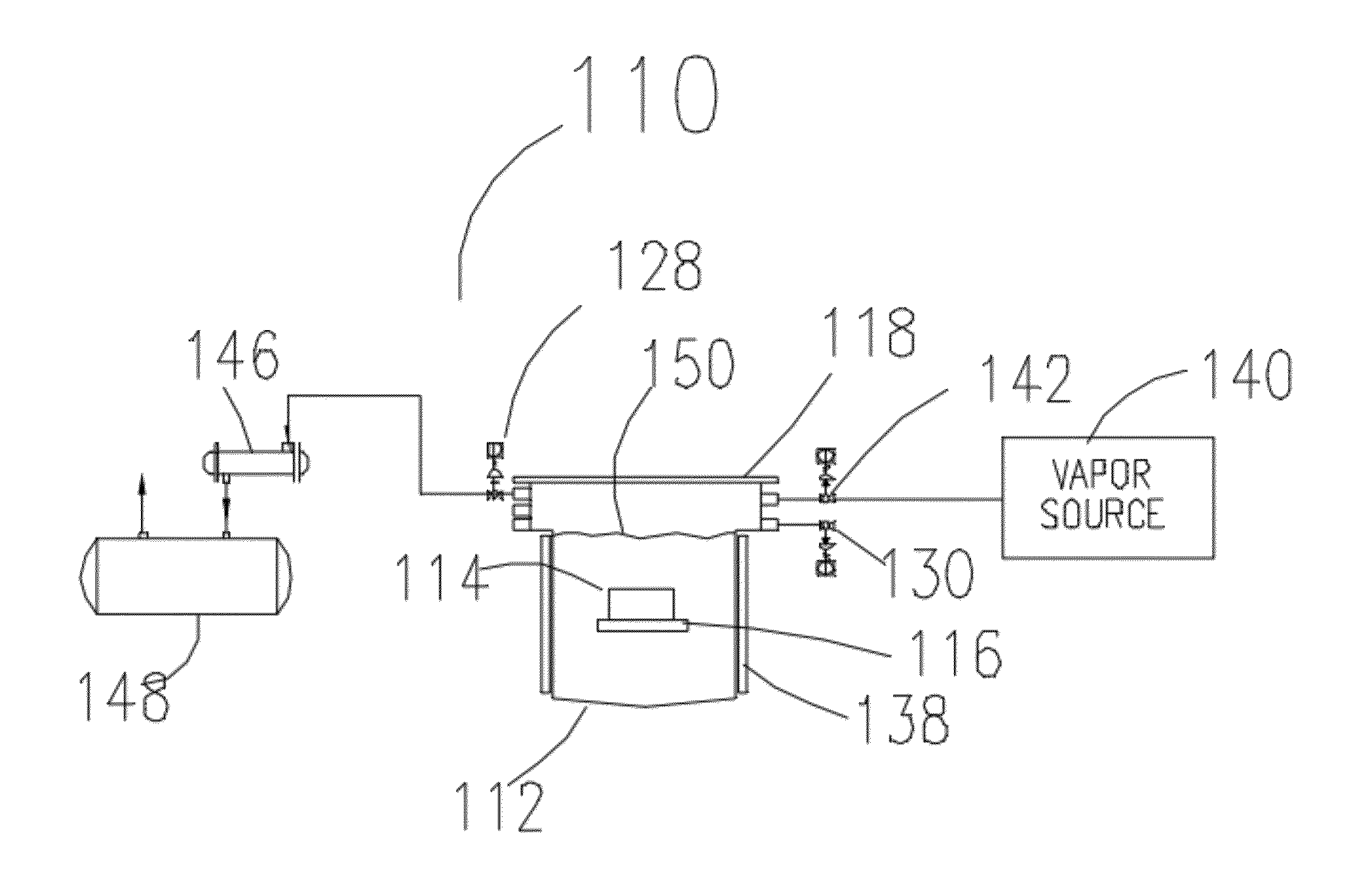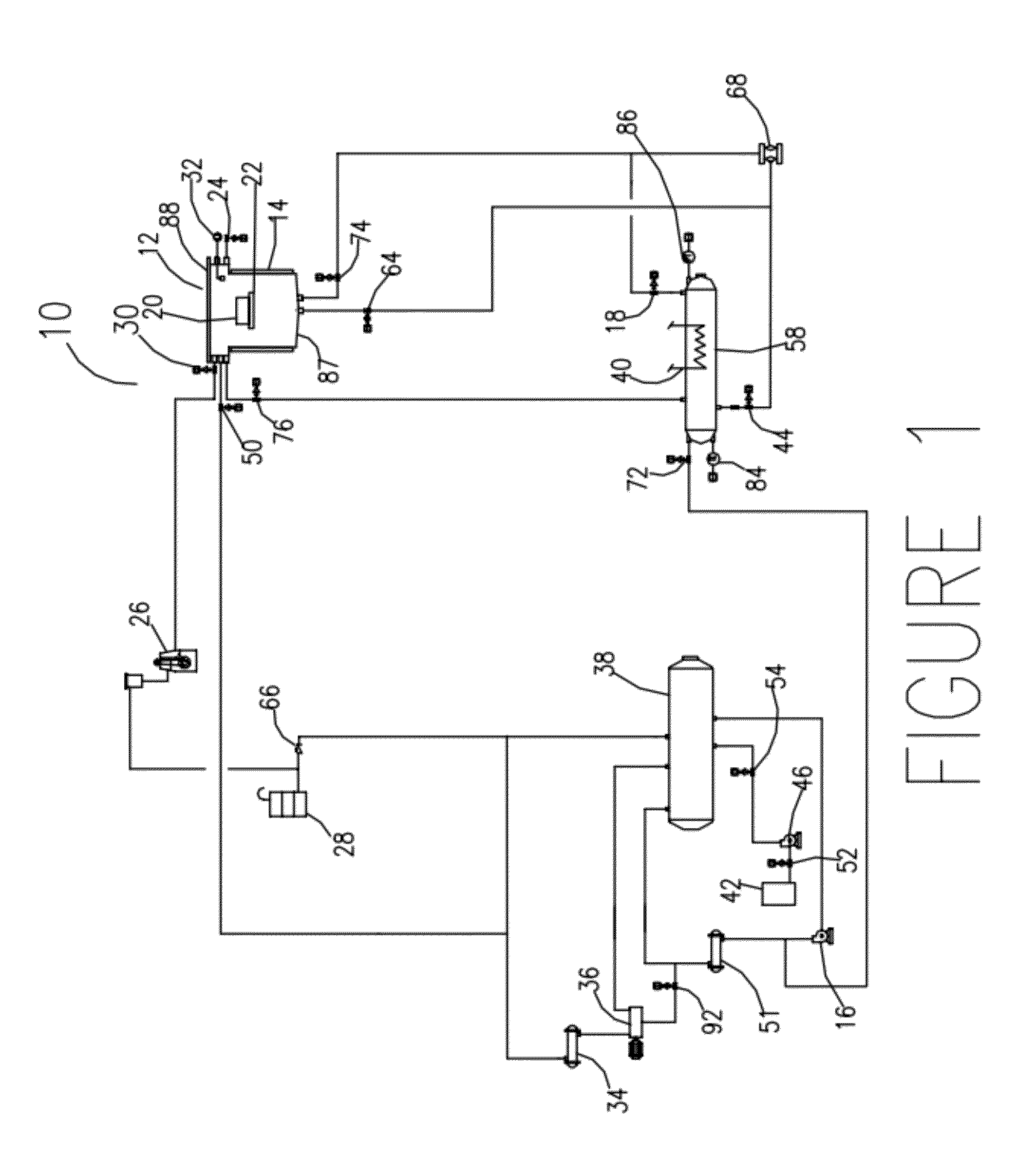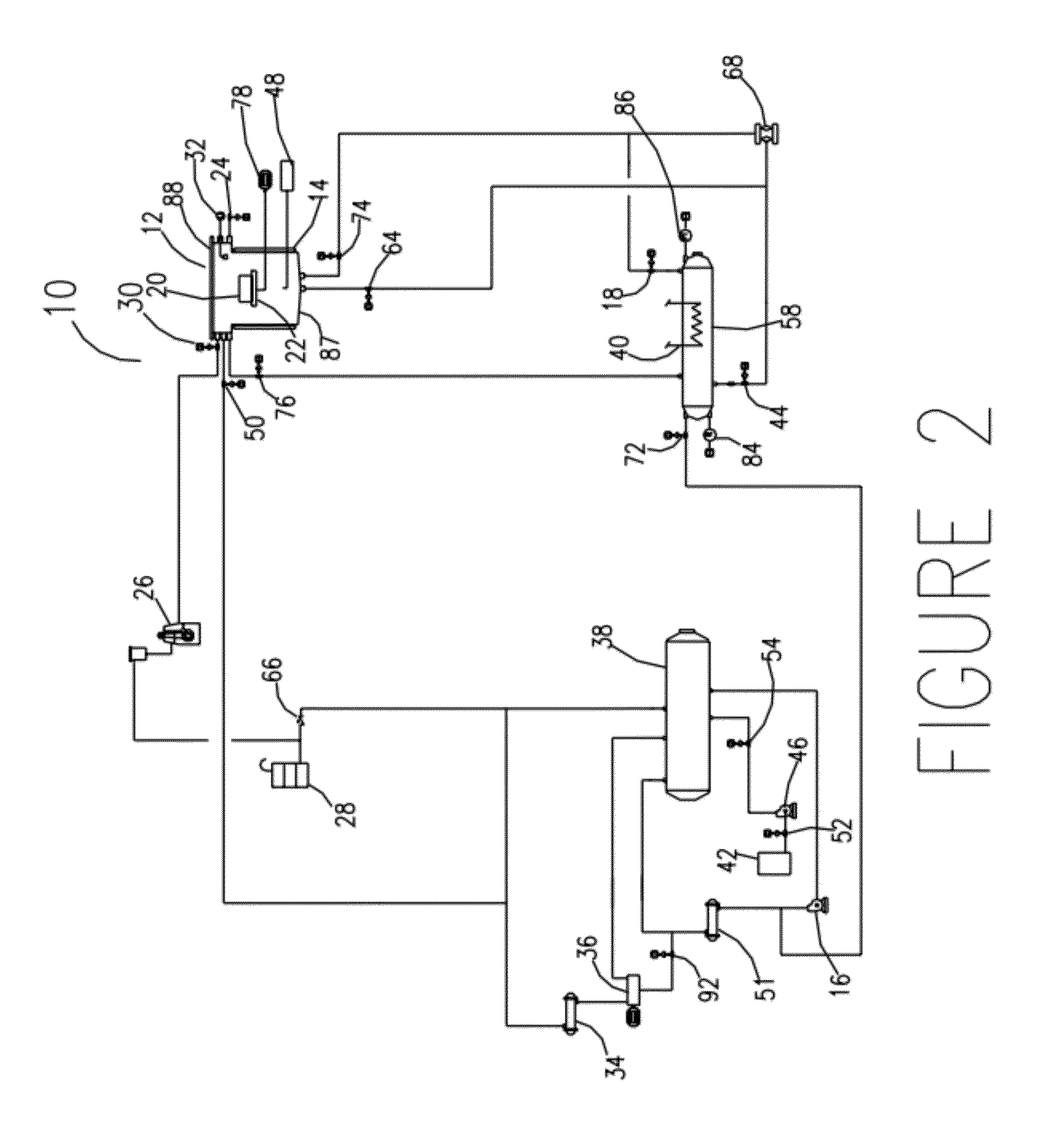Microscale fluid delivery system
a fluid delivery system and micro-scale technology, applied in the direction of basic electric elements, cleaning processes and utensils, liquid cleaning, etc., can solve the problems of particle not seeing this energy threshold, boundary layer particle thickness cannot be completely eliminated, etc., to enhance material removal, enhance material transfer, and enhance material transfer
- Summary
- Abstract
- Description
- Claims
- Application Information
AI Technical Summary
Benefits of technology
Problems solved by technology
Method used
Image
Examples
Embodiment Construction
[0053]Referring now to the drawings, the solvent and aqueous decompression processing system of the present invention is illustrated and generally indicated at 10 in FIG. 1.
[0054]In FIG. 1, the system 10 for implementing the teachings of this invention includes a main vacuum cavitational streaming (VCS) chamber generally indicated at 12 that may or may not be heated. The main VCS chamber 12 includes a main body portion 87 and a lid 88. In the preferred embodiment, the main body portion 87 of the VCS chamber 12 has an electric heat blanket 14. Other options for heating the chamber 12 include steam, or other heat transfer fluids, such as oil or hot water in an external jacket, plate coils or external pipe welded or soldered to the chamber. The system 10 further includes a solvent source generally indicated at 42, a solvent holding tank generally indicated at 38, and a heated solvent vessel generally indicated at 58. Other component parts of the system 10 will be described in connectio...
PUM
 Login to View More
Login to View More Abstract
Description
Claims
Application Information
 Login to View More
Login to View More - R&D
- Intellectual Property
- Life Sciences
- Materials
- Tech Scout
- Unparalleled Data Quality
- Higher Quality Content
- 60% Fewer Hallucinations
Browse by: Latest US Patents, China's latest patents, Technical Efficacy Thesaurus, Application Domain, Technology Topic, Popular Technical Reports.
© 2025 PatSnap. All rights reserved.Legal|Privacy policy|Modern Slavery Act Transparency Statement|Sitemap|About US| Contact US: help@patsnap.com



